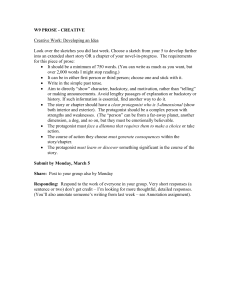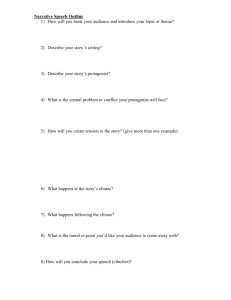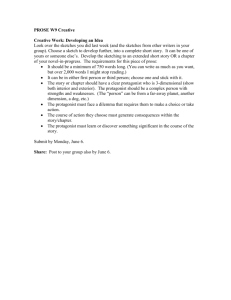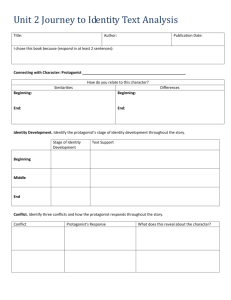ESSENTIAL ELEMENTS OF A STORY
advertisement
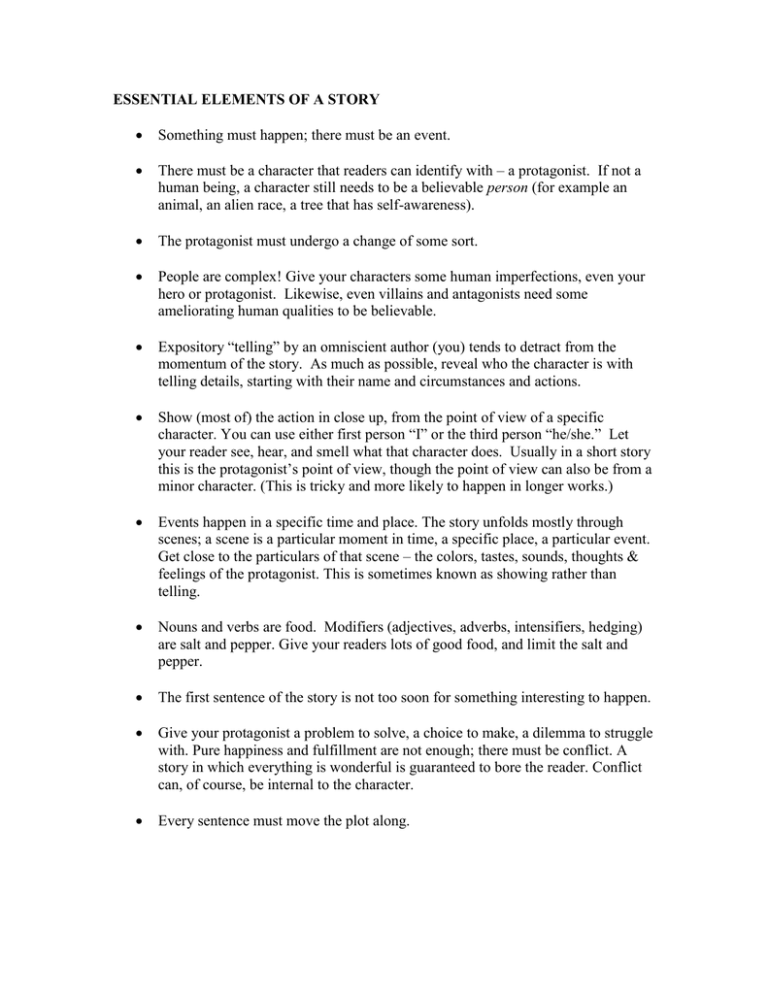
ESSENTIAL ELEMENTS OF A STORY Something must happen; there must be an event. There must be a character that readers can identify with – a protagonist. If not a human being, a character still needs to be a believable person (for example an animal, an alien race, a tree that has self-awareness). The protagonist must undergo a change of some sort. People are complex! Give your characters some human imperfections, even your hero or protagonist. Likewise, even villains and antagonists need some ameliorating human qualities to be believable. Expository “telling” by an omniscient author (you) tends to detract from the momentum of the story. As much as possible, reveal who the character is with telling details, starting with their name and circumstances and actions. Show (most of) the action in close up, from the point of view of a specific character. You can use either first person “I” or the third person “he/she.” Let your reader see, hear, and smell what that character does. Usually in a short story this is the protagonist’s point of view, though the point of view can also be from a minor character. (This is tricky and more likely to happen in longer works.) Events happen in a specific time and place. The story unfolds mostly through scenes; a scene is a particular moment in time, a specific place, a particular event. Get close to the particulars of that scene – the colors, tastes, sounds, thoughts & feelings of the protagonist. This is sometimes known as showing rather than telling. Nouns and verbs are food. Modifiers (adjectives, adverbs, intensifiers, hedging) are salt and pepper. Give your readers lots of good food, and limit the salt and pepper. The first sentence of the story is not too soon for something interesting to happen. Give your protagonist a problem to solve, a choice to make, a dilemma to struggle with. Pure happiness and fulfillment are not enough; there must be conflict. A story in which everything is wonderful is guaranteed to bore the reader. Conflict can, of course, be internal to the character. Every sentence must move the plot along.
